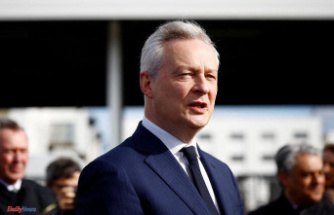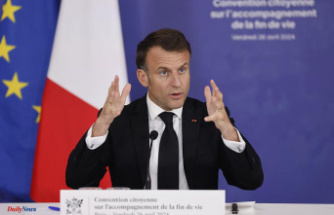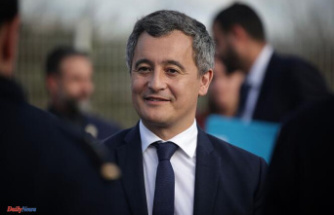As early as the weekend, the coalition could make a fundamental decision on the successor to the 9-euro ticket. However, new research results call into question some of the benefits of the measure, but also show which aspects absolutely must be retained.
A number goes through the country and around the world after the business agency Bloomberg also included it in its English-language service: the Federal Republic is said to have saved 1.8 million tons of CO2 emissions over three months thanks to the 9-euro ticket. That is almost as much as researchers expect from the introduction of a general speed limit - over the entire year. The problem: How valid this value is must be doubted. "Querying and observing mobility behavior is not trivial. Every method has its weaknesses," says Mark Andor, research group leader at the RWI Leibniz Institute for Economic Research. During a press round at the Science Media Center, Andor estimates the savings at 200,000 to 700,000 tons of CO2 to be significantly lower.
The past three months have been a massive €2.5 billion experiment and politicians are under pressure to make a decision on "what next?" before the full evaluation and publication of solid research data. to have to meet. The allegedly saved 1.8 million tons of CO2 are a figure from the Association of German Transport Companies (VDV), which was not impartial in the debate. However, it is doubtful that so many people have actually given up car journeys, and that large numbers of car commuters in particular have switched to public transport.
Andor's numbers, for example, indicate that "driving behavior has not declined so much," he says. Claudia Nobis, head of the mobility behavior research group at the DLR Institute of Traffic Behavior, is also cautious. The 9-euro ticket was "sold incredibly often - "Around half of the adult German population owned such a ticket," says Nobis - but: "Many used it seldom and then mainly in leisure traffic." Plus : "Tickets tended to be sold less in rural areas," reports Andreas Knie, head of the research group "Digital Mobility and Societal Differentiation" at the Berlin Social Science Center.
The 9-euro ticket: a flop? No, not at all. Only Nobis, Andor and Knie warn against absolute ratings at such an early stage after the end of the campaign, precisely because mobility behavior is complex to analyze. "We have to be very careful with far-reaching conclusions." It is difficult to measure which trips have replaced car trips and which were additional. "You only get ideas for doing certain things with a ticket like this," says Nobis. "Those who used it a lot used it halfway to work." But the frequent users were often regular bus and train drivers before. There were "no huge shifts" among occasional users.
However, the 9-euro ticket must not have been in vain for those who use it infrequently. Knie talks about "taster traffic" about the people who, after years of exclusively car mobility, have tried the bus and train again. Added to this is the image gain: "The ticket was suddenly on everyone's lips. Public transport was suddenly cool, when did we have that?" The three researchers agree that the greatest benefit was the simplicity of a nationwide public transport ticket at a standard price. "We have seen that two-thirds of people find this nationwide validity totally great," says Nobis.
In addition, there is the socio-political aspect: low-income earners in particular were able to take leisure trips with kith and kin, which they got far cheaper than any social ticket, as Knie said. According to his surveys, the users of the 9-euro ticket were more often women than men and tended to be younger. Andor knows that users tend to live in urban areas and tend not to own a car. "The bigger the city, the more people used it," says Andor. In the country, on the other hand, the offer was not accepted as well as Lars Boehme, Managing Director of the Uckermärkische Verkehrsgesellschaft (UVG), reported on ntv.de.
The incentive for the federal states to participate substantially in the successor ticket - as demanded by Transport Minister Volker Wissing - varies accordingly. Large-area countries with severely underserved regions would have to spend tens of millions to hundreds of millions without the transport offering improving and use remaining weak as a result. Especially since, according to Nobis, nine out of ten households in rural areas have at least one car and "very strong car-oriented routines" have become established. School, doctor, workplace, club, supermarket: whatever is not available in the village is driven to by car.
"The rural area for people who don't do any training is practically lost for public transport," says Knie. From this point of view, millions from your own budget for the follow-up ticket for countries such as Brandenburg, Hesse or Mecklenburg-Western Pomerania would be a bad investment. At least if buses and trains are not expanded at the same time - for which they are demanding federal funds. But it is again the Federal Minister of Finance and FDP leader Christian Lindner who has set himself the goal of reducing mixed financing more strongly. And local transport is basically a matter for the federal states.
Nevertheless, Wissing has to come up with a solution quickly. A decision as to where the journey should go could already be made in the coalition committee meeting at the weekend. "It's a great pity to let customer groups who have just started using public transport again drop out again," warns Nobis to hurry. On the other hand, the financial relief for the lower to middle income groups - at least in the metropolitan areas with strong public transport - proves to be particularly effective in times of inflation. Subscribers and regular users felt the price savings directly. Knie also points out that nobody sells their car after three months. With a permanently cheap and attractive offer, the incentive to switch could be stronger. In addition, the previous federal government has decided to increase the share of bus and train in the total traffic volume to 38 percent by 2030. Currently, the proportion "certainly does not exceed 10.13 percent," estimates Knie. Wissing should therefore triple the number within eight years.
But at what price? In a survey that Andor relies on, many respondents have already dismissed a price higher than 29 euros. However, the government parties are only discussing a nationwide ticket between 49 and 69 euros, with the Greens proposing a regional ticket for 29 euros. That could make sense, says Andor. Nevertheless, he recommends investing a large part of a possible larger sum for public transport in the expansion of infrastructure and capacities instead of financing cheap tickets from this alone. "We also see in big cities: the better the public transport service, the more people use it." Low earners could also be specifically supported.
Nobis also considers the simplicity of the ticket and a good offer to be at least as important as the price: "A group that travels with a certain regularity and that also has a good offer is also willing to pay a certain price ."












